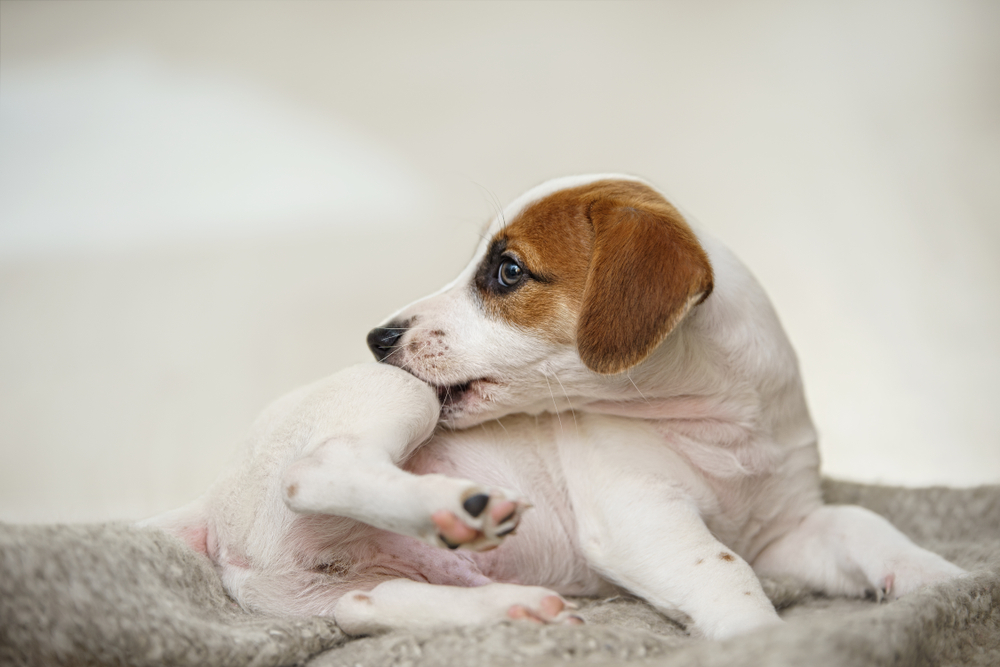Coat and skin disorders in dogs can be detected quite easily, since it is easy to see, especially if you’re the one who is doing the grooming of the coat. Probably the most common reason for a trip to the veterinary office. Do not ignore constant scratching or licking, which can turn a minor disorder into something more serious.
Signs of a Problem
- Dull, greasy coat
- Scale, scabs, and crusts on skin or in coat
- Skin rash or spots
- Hair loss
- Change in color of skin or hair
- Itchiness
- Unpleasant odor
- Excessive licking or scratching
- Unexplained bumps or lumps
Allergy and Infection
Dogs that are allergic to fleas, substances such as pollen, or certain foods often react with itchiness. Skin allergies, especially if they cause constant scratching, can lead to recurrent skin infections needing repeated, long cycles of antibiotics.
It is important to try to identify the triggers of an allergy, because it may be possible to avoid the problem (by changing to a hypoallergenic diet, for example), or to treat it with a medication or desensitizing vaccine. Antihistamines can help limit itchiness, but some dogs need low-dose corticosteroids.
Acute Moist Dermatitis
Also kno wn as a hot spot, this is a sticky area of infected, oozy, often smelly skin that the dog exacerbates by repeatedly licking and scratching.
wn as a hot spot, this is a sticky area of infected, oozy, often smelly skin that the dog exacerbates by repeatedly licking and scratching.
The original cause may have been an insect sting. Treatment is aimed at thoroughly cleansing the area and preventing further self-harm, together with antibiotics and bathing twice daily with a teaspoonful of salt in half a quart of warm water.
Anal Furunculosis
If your dog shows extreme pain when eliminating, he may have a serious, deep-seated condition in the tissues around the anus known as anal furunculosis.
The disorder may be accompanied by colitis or irritable bowel syndrome. Looking under the tail reveals a raw, foul-smelling area of ulceration. The current approach is drug treatment to suppress the immune response that causes the problem, with surgery if the area does not heal fully. However, unfortunately treatment is not always successful.
Sebaceous Adenitis
This autoimmune disorder targets the hair follicles, especially the glands within them that produce sebum, the oily substance that protects and waterproofs the hair and skin.
Symptoms include alopecia (hair loss), scaling of the skin, and sometimes intense itching. Recurrent secondary bacterial skin infections can be a complication. Treatment relies on shampoos, oil baths, dietary supplements, and antibiotics.
Ringworm
A highly contagious fungal skin infection, ringworm can be transmitted to humans. The disease causes scaling and crusting of the skin, and hair loss. It is usually diagnosed by checking the area with a fluorescent lamp or placing hairs on a culture medium and watching for signs of fungal growth.
Other pets should be tested as well. Treatment includes shampoos, creams, and oral drugs. The fungal spores can persist for months, so you should destroy all your dog’s grooming tools, collars, leads, and bedding, and vigorously vacuum your house and car.
Skin Growths
Growths such as cysts, warts, and tumors may be seen or felt in your dog’s skin. Always have lumps investigated—early diagnosis and treatment could be vital. Your vet may take a few cells or a small section of the mass for diagnosis before making a plan for action.

